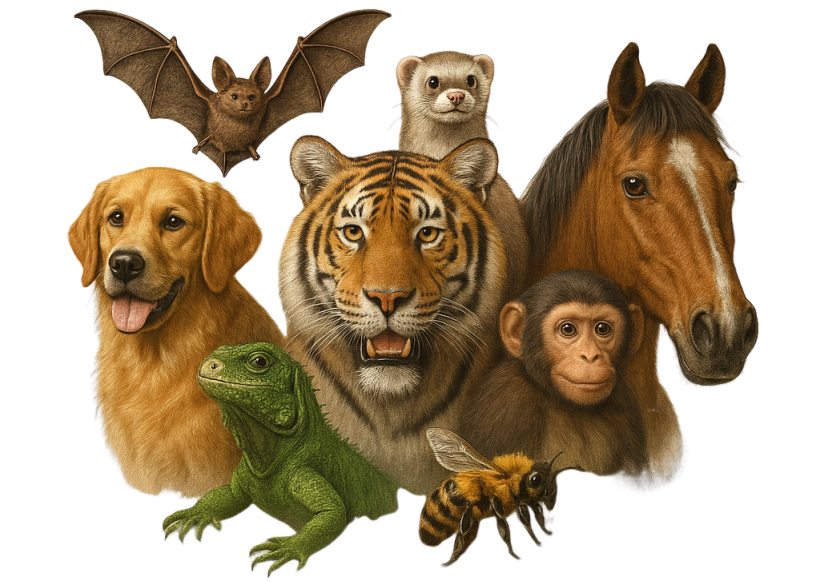7 Reasons Silver Labrador Retriever Puppies Are the Best Family Dogs
Wondering why a furry friend is perfect for your home? Explore 7 reasons silver Labrador retriever puppies make ideal family dogs. Ready to meet your match? Discover more!
Introduction
Silver Labrador retrievers, with their distinctive shimmering coats and heartwarming personalities, have rapidly grown in popularity among families searching for the perfect canine companion. These unique-colored Labs possess all the beloved traits of traditional Labradors, wrapped in a stunning silvery-blue package that turns heads at dog parks nationwide. Silver Labrador retriever puppies combine the breed’s legendary temperament with a rare aesthetic appeal that many find irresistible.
Understanding what makes these special pups ideal family additions isn’t just about appreciating their beauty—it’s about recognizing how their inherent characteristics align perfectly with family life dynamics. Whether you’re a bustling household with active children or a quieter home seeking loyal companionship, silver Labrador retriever puppies offer qualities that adapt beautifully to various family structures.
Did you know that while their silver coat color has sparked some controversy among purists, these dogs maintain the same genetic disposition for gentleness and trainability that has made Labrador retrievers America’s most popular dog breed for 31 consecutive years? This fascinating color variation opens the door to owning a distinctive pet with all the classic Lab traits families have cherished for generations.
Species Overview
Scientific Name: Canis lupus familiaris
Silver Labrador retrievers belong to the same species as all domestic dogs. While some debate exists about their classification within the Labrador retriever breed due to their unique coloration, genetically they remain purebred Labradors with a dilution gene affecting their coat color.
Physical Characteristics
Silver Labrador retriever puppies typically weigh between 10-20 pounds at 8-10 weeks, eventually maturing into medium-large dogs ranging from 55-80 pounds for males and 55-70 pounds for females. Standing 21.5-24.5 inches tall at adulthood, these dogs possess the classic Labrador build: sturdy, athletic frames with broad heads, friendly expressions, and otter-like tails.
The defining characteristic—their silver coat—appears as a diluted chocolate color, creating a beautiful gray-blue sheen that distinguishes them from traditional black, yellow, or chocolate Labs. Their double coat features a soft, water-resistant undercoat and a slightly rougher outer coat that sheds seasonally. Silver Labrador puppies often have striking blue-gray eyes that may darken to amber or brown as they mature, adding to their unique appeal.
Subspecies
While not technically a subspecies, silver Labradors represent a color variation within the Labrador retriever breed. They carry the dilution gene (d gene) that lightens the chocolate coat color to silver. This genetic feature doesn’t change their classification as purebred Labradors but does make them less common than standard-colored Labs.
Some breed purists contend this coloration resulted from crossbreeding with Weimaraners decades ago, while others maintain it’s simply a rare genetic expression within the breed. The American Kennel Club recognizes them as chocolate Labs with a dilution factor, allowing registration but not competition in conformation events where only the three standard colors (black, yellow, and chocolate) are permitted.
Habitat and Distribution
Natural Habitat
Silver Labrador retriever puppies, like all domestic dogs, have adapted beautifully to living alongside humans. Their ancestors were primarily working dogs bred to assist fishermen in Newfoundland, Canada, retrieving fishing nets and escaped fish from the icy North Atlantic waters. This heritage explains their natural affinity for water and their exceptional swimming abilities.
In the family setting, silver Labs thrive in environments where they have adequate space to exercise. While they can adapt to apartment living with sufficient daily activity, they’re most content in homes with yards where they can run and play. Their thick double coat makes them resilient in various climates, though they may struggle in extreme heat due to their insulating undercoat.
Geographic Range
Today’s silver Labrador retriever puppies can be found throughout North America, Europe, Australia, and increasingly across Asia and South America. Their popularity has made them a global breed, though they remain somewhat rarer than traditional-colored Labradors.
Originally, Labradors emerged from Newfoundland, Canada in the 1800s before being refined in England. The silver variation specifically became more widely recognized in the United States during the 1950s, with breeding programs dedicated to this color developing more extensively in the 1980s and 1990s. Today, reputable silver Lab breeders can be found across most states, with notable concentrations in the Midwest and Southern United States.
Adaptations
Silver Labrador retriever puppies inherit remarkable adaptations that served their ancestors well as working water dogs. Their water-resistant double coat protects them during swimming and in cold conditions. Webbed feet make them powerful swimmers, while their “otter tail” serves as an effective rudder in water.
Perhaps their most significant adaptation for family life is their exceptional temperament. Generations of selective breeding have produced dogs with gentle mouths (originally needed for retrieving game without damage), patient dispositions, and high trainability—all traits that translate perfectly to living with children and other pets.
Their naturally high exercise threshold and energy levels reflect their working heritage, making them ideal companions for active families who enjoy outdoor adventures. Meanwhile, their adaptable nature allows them to settle contentedly indoors when properly exercised, demonstrating the perfect balance between enthusiasm and calm that families seek.
Diet and Feeding Habits
What They Eat
Silver Labrador retriever puppies require a balanced diet rich in proteins, fats, carbohydrates, vitamins, and minerals to support their rapid growth and development. High-quality puppy food specifically formulated for large breeds will provide the appropriate nutrition while helping prevent overly rapid growth that can contribute to joint problems.
Typical nutritional requirements include:
- Protein (22-24% for puppies): Supports muscle development and growth
- Fat (12-15% for puppies): Provides energy and supports coat health
- Calcium and phosphorus: Critical for proper skeletal development
- DHA: An omega-3 fatty acid important for brain and eye development
Most silver Labrador puppies thrive on 3-4 meals daily until 6 months of age, gradually transitioning to twice-daily feeding as adults. Portion control is essential, as Labradors are notoriously food-motivated and prone to obesity if overfed.
Hunting or Foraging Behavior
While domesticated silver Labrador puppies no longer need to hunt or forage, they retain many instinctive behaviors from their working heritage. Their natural retrieving instinct manifests early, with puppies often showing interest in carrying toys and following moving objects. This retrieving drive makes them excellent candidates for fetch games and retrieval training.
Silver Labs often display natural “hunting” behaviors when playing, including tracking scents, pouncing on toys, and carrying items proudly back to their owners. These instincts can be channeled constructively through games, training, and dog sports like retriever trials or dock diving.
Dietary Needs
Silver Labrador retriever puppies have specific nutritional requirements that differ from adult dogs. Their rapid growth phase requires careful monitoring to provide sufficient calories without promoting excessive weight gain that could stress developing joints and bones.
A typical 8-week-old silver Labrador puppy might require around 1,000 calories daily, divided into multiple meals. By adulthood, their needs may range from 1,300-1,800 calories depending on activity level, metabolism, and whether they’ve been spayed or neutered.
Unlike their wild ancestors, domestic Labs rely on their human families for proper nutrition. Special considerations include:
- Large breed puppy formulas that moderate growth rate to protect joint development
- Avoidance of supplemental calcium, which can contribute to skeletal problems
- Appropriate treats that complement their diet without exceeding 10% of daily calories
- Careful monitoring for food allergies, which sometimes manifest as skin issues or digestive problems
Behavior and Social Structure
Social Behavior
Silver Labrador retriever puppies are quintessentially social animals, displaying an inherent desire to bond with both human family members and other pets. This natural sociability makes them exceptional family dogs when properly socialized during their critical developmental period (roughly 3-14 weeks).
Young silver Labs typically show remarkable adaptability within the family “pack,” readily accepting children, visitors, and other animals as part of their social circle. They display classic canine communication signals like play bows to invite interaction, relaxed body posture when comfortable, and seeking physical contact with family members for reassurance and bonding.
These puppies generally exhibit low aggression and high sociability scores in temperament testing, reinforcing their reputation as excellent family companions. Their eagerness to please humans often manifests as following family members from room to room and seeking involvement in daily activities—behavior that creates strong family bonds but can sometimes develop into separation anxiety if not properly managed.
Communication
Silver Labrador retriever puppies communicate through a rich vocabulary of vocalizations, body language, and behaviors. Their communication toolkit includes:
- Barking: Usually purpose-driven rather than excessive, often signaling excitement, alerting to visitors, or requesting attention
- Body language: Wagging tails (with the entire body when very happy), perked ears for attention, play bows to invite games
- Physical contact: Leaning against family members, gentle pawing for attention, and the famous “Labrador lean” where they press against a person’s legs to establish connection
- Facial expressions: The distinctive “Labrador smile” with relaxed open mouth and soft eyes communicates contentment
Silver Lab puppies are particularly adept at reading human emotions and responding appropriately—offering playful energy to engaged children or settling quietly beside someone who’s reading or watching television. This emotional intelligence contributes significantly to their success as family dogs, as they adapt their behavior to match the household mood.
Mating and Reproduction
Responsible breeding of silver Labrador retrievers involves careful genetic testing and health screening, as the silver coloration remains somewhat controversial within the breed. Female silver Labs typically reach sexual maturity between 6-12 months, though ethical breeders wait until at least 2 years of age for health clearances before breeding.
The reproductive cycle includes:
- Heat cycles occurring approximately every 6 months, lasting 2-3 weeks
- Gestation period of about 63 days
- Average litter sizes of 6-8 puppies
- Newborn puppies weighing 14-16 ounces at birth
Silver Labrador mothers typically display excellent maternal instincts, nursing puppies for 3-4 weeks before weaning. Puppies open their eyes at approximately 10-14 days and begin showing distinct personality traits around 3-4 weeks. By 7-8 weeks, they’re ready for placement in forever homes, though many breeders prefer waiting until 8-10 weeks to ensure optimal socialization with littermates.
Conservation Status

Endangerment Level
Silver Labrador retrievers are not endangered or threatened; in fact, their popularity continues to rise as more families discover this unique color variation. As a color variation within one of the world’s most popular dog breeds, silver Labs benefit from the breed’s overall healthy population numbers.
However, the rarity of the silver coloration has created some concerning breeding practices, with some unethical breeders focusing solely on color while neglecting health and temperament considerations. Responsible ownership includes sourcing puppies from ethical breeders who prioritize health testing and temperament alongside color.
Threats
While not facing extinction, silver Labrador retriever puppies do face certain challenges:
Health concerns: Like all Labradors, silvers can be prone to hip and elbow dysplasia, exercise-induced collapse, progressive retinal atrophy, and other heritable conditions.
Breeding controversies: The debate surrounding their color origin has sometimes led to discrimination against silver Labs in certain breeding circles.
Overbreeding: Their growing popularity has attracted irresponsible breeders producing puppies without proper health testing or socialization.
Abandonment: As with many trendy dog varieties, some families acquire silver Lab puppies without understanding the breed’s exercise needs and commitment level, leading to surrenders at shelters.
Conservation Efforts
Rather than conservation in the traditional sense, efforts to protect silver Labrador retriever puppies focus on ethical breeding practices and responsible ownership:
- Dedicated silver Lab breeders performing comprehensive health testing, including hip and elbow evaluations, eye clearances, and genetic testing for inheritable conditions
- Education programs helping potential owners understand the commitment involved in raising a Labrador
- Rescue organizations specifically working with Labradors, including silver variations, to rehome dogs and educate the public
- Advocacy for recognition of silver as a legitimate Labrador color while maintaining breed standards for health and temperament
Interesting Facts
Silver Labrador retriever puppies are fascinating dogs with several unique characteristics that set them apart:
The distinctive silver coloration results from a dilution gene that lightens the chocolate coat color. This same genetic mechanism creates “blue” Dobermans and “silver” Weimaraners.
Young silver Lab puppies often have striking blue eyes that gradually change to amber or brown as they mature, creating an especially captivating appearance during their first few months.
Despite controversies around their color origin, DNA testing consistently confirms silver Labs as purebred Labradors without Weimaraner genetic markers.
Silver Labradors often command higher prices than standard-colored Labs due to their rarity and unique appearance, with well-bred puppies typically ranging from $1,200-$2,500.
While the silver coloration remains controversial in show rings, silver Labs excel in performance events like obedience, agility, and hunting tests where color isn’t evaluated.
Like all Labradors, silver puppies go through a “lanky” adolescent phase between 6-18 months where they may appear disproportionate before filling out into their adult physique.
Many silver Lab owners report their dogs receiving constant attention during walks and at dog parks, with strangers frequently asking about this unusual-colored Labrador variant.
Tips for Caring for Silver Labrador Retriever Puppies
Bringing a silver Labrador retriever puppy into your family requires preparation and understanding of their specific needs:
Health Considerations
Preventative Care Schedule: Establish a relationship with a veterinarian immediately. Silver Lab puppies typically follow this vaccination schedule:
- 8 weeks: Distemper, Parvovirus, Adenovirus
- 12 weeks: Second round of core vaccines plus Leptospirosis
- 16 weeks: Final puppy vaccines and rabies
Genetic Health Monitoring: Be vigilant about common Labrador health issues, including:
- Hip and elbow dysplasia (moderate exercise and maintaining healthy weight helps)
- Exercise-induced collapse (affected dogs should avoid strenuous activity)
- Progressive retinal atrophy (regular eye examinations recommended)
- Color dilution alopecia (more common in dogs with dilution genes)
Growth Management: Use large-breed puppy food to control growth rate and reduce joint stress. Monitor weight carefully as Labs are prone to obesity.
Training and Socialization
Early Socialization: Expose your silver Lab puppy to various people, sounds, and environments during the critical 8-16 week period.
Positive Reinforcement: Use reward-based training methods that leverage their eagerness to please and food motivation.
Consistency: Establish household rules early—what’s cute in a 15-pound puppy becomes problematic in a 70-pound adult.
Mental Stimulation: Provide puzzle toys and training challenges to satisfy their intelligent minds and prevent boredom behaviors.
Exercise Requirements
Silver Labrador puppies have substantial exercise needs that increase as they grow:
- 8-12 weeks: Short play sessions (15-20 minutes) several times daily
- 3-6 months: 20-30 minute walks plus play time (careful not to overexercise growing joints)
- 6-18 months: Gradually increasing exercise duration while avoiding high-impact activities
- Adults: 1-2 hours daily of walking, swimming, playing fetch, or hiking
Remember that insufficient exercise often leads to destructive behaviors as these intelligent, energetic dogs seek outlets for their natural drives.
Role in the Ecosystem
Ecological Importance
As domesticated companions, silver Labrador retriever puppies don’t fulfill a natural ecosystem role like their wild ancestors. However, they serve important functions in human society:
Service and Working Roles: While coat color doesn’t affect working ability, silver Labs can excel in:
- Service dog roles assisting individuals with disabilities
- Therapy dog work in hospitals, schools, and nursing homes
- Search and rescue operations
- Hunting and field work as retrievers
Human-Animal Bond: These dogs strengthen the connection between humans and the natural world, fostering appreciation for animals and encouraging outdoor activities.
Emotional Support: Their natural empathy makes them exceptional emotional support animals, providing comfort and stability to individuals with anxiety, depression, or PTSD.
Impact of Decline
While silver Labrador retrievers aren’t facing population decline, the hypothetical impact would primarily affect human welfare rather than natural ecosystems:
Loss of a uniquely suited family companion with the perfect combination of gentleness, trainability, and adaptability
Reduction in available service and therapy dogs, particularly affecting individuals who benefit from Labs’ stable temperaments
Diminished genetic diversity within the Labrador retriever gene pool, potentially limiting future breeding improvements
Cultural impact, as Labradors represent a significant part of many nations’ canine heritage and family traditions
Conclusion
Silver Labrador retriever puppies truly represent an exceptional family companion choice, combining the time-tested temperament of America’s favorite breed with a distinctive appearance that stands out in any setting. Their natural affinity for children, impressive trainability, and adaptable nature make them ideal partners for families of all configurations.
Beyond their striking silver coats, these dogs bring the legendary Labrador loyalty, playfulness, and unwavering devotion that has endeared the breed to millions of families worldwide. While they require commitment to proper exercise, training, and healthcare, the rewards of sharing your home with a silver Labrador are immeasurable in terms of companionship, joy, and unconditional love.
As you consider adding a four-legged family member, remember that responsible ownership begins with selecting a reputable breeder who prioritizes health and temperament alongside color. By making this commitment, you’re not only providing a loving home for a deserving puppy but also supporting ethical breeding practices that ensure these magnificent dogs continue bringing happiness to families for generations to come.
Frequently Asked Questions
Are silver Labrador retrievers recognized by the AKC?
Yes and no. Silver Labrador retrievers can be registered with the American Kennel Club, but they’re typically registered as “Chocolate” with the dilution factor noted. They cannot compete in conformation shows where only the three standard colors (black, yellow, and chocolate) are recognized under breed standards. However, they can fully participate in all performance events like obedience, rally, agility, and hunting tests.
Do silver Lab puppies change color as they grow?
Silver Lab puppies typically lighten somewhat as they mature. Newborn puppies often appear darker gray, sometimes with charcoal undertones, before developing their true silver coat by 8-12 weeks. Their eye color usually changes from puppy blue to amber or brown by 3-4 months of age. Some silvering or lightening of the coat may continue throughout the first year.
Are silver Labrador retrievers more expensive than traditional colors?
Yes, silver Labrador retriever puppies generally command higher prices than their black, yellow, or chocolate counterparts due to their rarity and unique appearance. While standard-colored Labs from reputable breeders typically range from $800-1,500, silver Labs often cost $1,200-2,500 from health-tested parents. This price difference reflects their limited availability rather than any functional superiority.
Do silver Labrador retrievers have different temperaments than other Labradors?
No, coat color doesn’t affect temperament. Silver Labradors possess the same friendly, outgoing, and trainable disposition as traditional Labradors. Any significant temperament differences between individual dogs reflect their specific breeding, socialization, and training rather than coat color. Responsible breeders select for the classic Lab temperament regardless of color.
Are silver Labs more prone to health problems than other Labradors?
Silver Labradors face the same general health concerns as all Labradors, including hip dysplasia, elbow dysplasia, and eye conditions. However, dogs with the dilution gene can be more susceptible to Color Dilution Alopecia, a condition causing hair thinning and skin problems. This makes choosing a breeder who performs comprehensive health testing particularly important when selecting a silver Lab puppy.
How much exercise do silver Labrador retriever puppies need?
Silver Lab puppies need age-appropriate exercise that increases gradually as they mature. Young puppies (8-12 weeks) benefit from multiple short play sessions daily, while adolescent Labs (6-18 months) require 30-60 minutes of moderate activity twice daily. Adult silver Labs typically need 1-2 hours of daily exercise including walking, swimming, or retrieving games to remain physically and mentally healthy.
Are silver Labradors good with children and other pets?
Silver Labradors excel with children and typically integrate well with other pets when properly socialized. Their patient nature, gentle mouth, and high pain threshold make them ideal playmates for respectful children. Early exposure to other animals helps ensure they develop appropriate social skills. As with any dog, interactions between young children and puppies should always be supervised.







